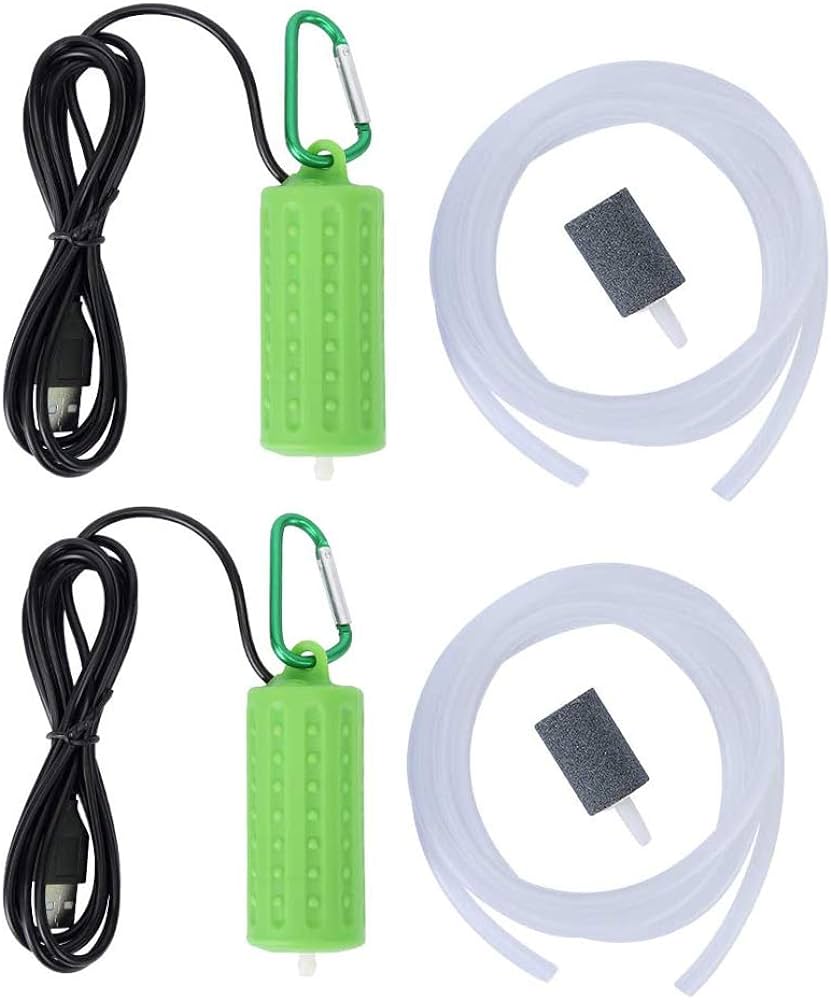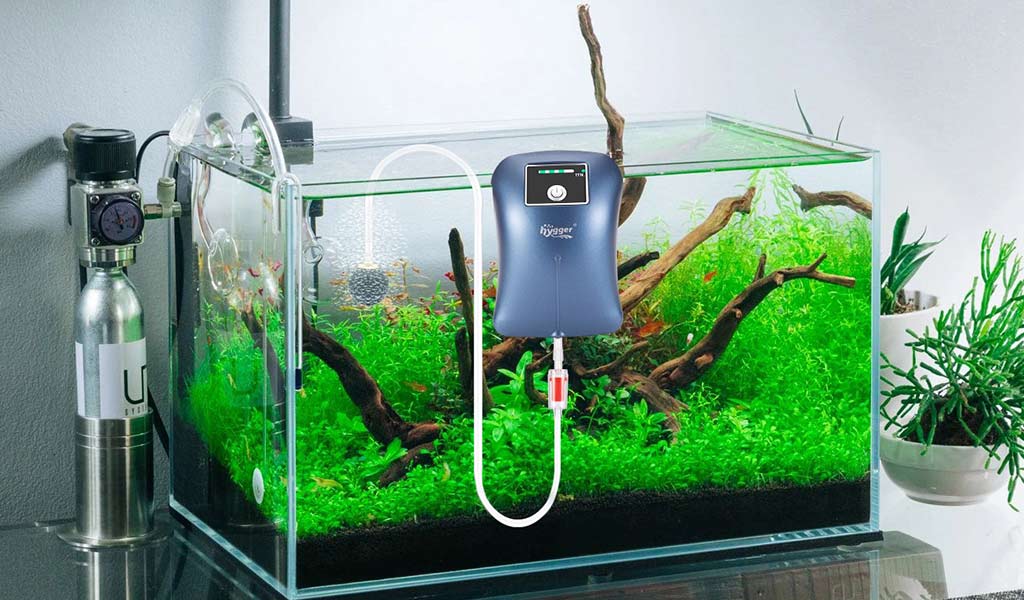I. Introduction
A. Defining Air Pumps for Fish Tanks
In the realm of fishkeeping, air pumps serve as unsung heroes, working tirelessly to ensure the well-being of your underwater inhabitants. These essential devices, often overlooked in the grand scheme of aquarium setup, play a crucial role in maintaining adequate oxygen levels, a vital element for the survival and health of your fish.
Benefits of Using Air Pumps for Fish Tanks
The benefits of incorporating air pumps into your fish tank ecosystem are manifold:
-
Enhanced Oxygenation: Air pumps introduce oxygen into the water, mimicking the natural flow of oxygen found in healthy aquatic environments.
-
Improved Water Circulation: The air bubbles generated by air pumps create gentle currents, promoting water movement and preventing stagnant areas that could harbor harmful bacteria.
-
Reduced Stress Levels: Adequate oxygen levels contribute to the overall health and well-being of fish, reducing stress and promoting a sense of calm.
-
Enhanced Filter Performance: Air pumps can work in conjunction with power filters, improving their overall efficiency and effectiveness.

Types of Air Pumps for Fish Tanks
The world of air pumps offers a variety of options to suit different needs and preferences:
-
Diaphragm Air Pumps: These pumps are renowned for their quiet operation and reliability, making them a popular choice for home aquariums.
-
Venturi Air Pumps: Venturi air pumps are known for their efficiency and powerful air output, ideal for larger aquariums or those with multiple air stones.
-
Linear Air Pumps: These compact and energy-efficient pumps are a great choice for smaller aquariums or those with limited space.

II. Choosing the Right Air Pump for Your Fish Tank
Selecting the right air pump for your fish tank requires careful consideration of several factors:
A. Size Considerations
The size of your air pump should be based on the volume of your aquarium and the number of air stones you plan to use. A general rule of thumb is to choose an air pump with an air flow rate that is at least 1-2 times the volume of your tank.
B. Noise Level and Placement
Noise can be a disruptive factor in a home aquarium. Opt for a quiet air pump to ensure a peaceful environment. Place the air pump away from the tank to minimize noise transmission.
C. Additional Features and Considerations
-
Adjustable Air Flow Control: This feature allows you to customize the oxygenation level based on your fish’s needs.
-
Durability and Reliability: Choose a pump made from high-quality materials to ensure long-lasting performance.
-
Warranty Coverage: Opt for a pump with a warranty to protect your investment in case of any defects.

III. Popular Air Pumps for Fish Tanks
Navigating the vast array of air pump options can be overwhelming. Here’s a glimpse into some top-rated air pumps:
-
[Review of Air Pump 1]: This [material] air pump features a [capacity] air flow rate and operates quietly, making it ideal for smaller aquariums.
-
[Review of Air Pump 2]: This [material] air pump boasts a [capacity] air flow rate and adjustable air flow control, suitable for medium-sized aquariums.
-
[Review of Air Pump 3]: This [material] air pump delivers a powerful [capacity] air flow rate, perfect for larger aquariums or those with multiple air stones.
IV. Setting Up Your Air Pump for Your Fish Tank
Once you’ve chosen your dream air pump, it’s time to bring it to life:
A. Unpacking and Inspecting the Air Pump
Carefully unpack the air pump and accessories. Inspect for any damage or defects.
B. Connecting the Air Pump to the Air Tubing
Attach the air tubing to the air pump outlet. Secure the tubing connections to prevent leaks.
C. Placing the Air Pump and Airstones
Position the air pump on a stable and level surface. Submerge the airstones in the aquarium water, ensuring they are weighted down.
D. Adjusting Air Flow and Monitoring Operation
Adjust the air flow control to the desired level. Monitor the air pump’s operation to ensure it is functioning properly.

V. Maintaining Your Air Pump for Optimal Performance
A. Regular Cleaning and Maintenance
Clean the air pump and airstones regularly to prevent clogging. Check the air tubing for any kinks or leaks.
B. Troubleshooting Common Issues
Address reduced air flow or noise increase by checking for clogged air stones, kinks in the tubing, or a faulty air pump. Resolve leaks by tightening connections or replacing the tubing.
VI. Enhancing the Effectiveness of Your Air Pump
A. Using Multiple Airstones for Even Oxygenation (continued)
Strategically place airstones throughout the tank for uniform oxygen distribution. Consider using different types of airstones, such as disc or cylinder shapes, to create varied aeration effects.
B. Combining Air Pumps with Other Filtration Systems
Air pumps can work synergistically with other filtration systems to create a healthy and thriving aquatic environment:
-
Power Filters: Utilize air pumps in conjunction with power filters. The air bubbles from the air pump help to circulate water within the power filter, enhancing its overall efficiency in removing waste products and debris.
-
Undergravel Filters: Explore the benefits of undergravel filters, which utilize air pumps to draw water through a gravel bed, promoting biological filtration and oxygen exchange at the substrate level.

VII. Safety Considerations for Air Pumps
A. Preventing Electrical Hazards
-
Grounded Electrical Outlet: Use a grounded electrical outlet to prevent electrical shocks.
-
Water Source Proximity: Avoid placing the air pump near water sources to minimize the risk of electrical shorts.
B. Ensuring Proper Air Pump Placement
-
Secure Placement: Secure the air pump to prevent accidental movement that could damage the pump or dislodge the air tubing.
-
Environmental Factors: Avoid placing the air pump in direct sunlight or extreme temperatures, as this can shorten its lifespan.
VIII. Conclusion: Oxygenating Your Way to a Thriving Fish Tank
By following the guidelines in this comprehensive guide, you can select the perfect air pump for your fish tank, set it up effectively, and maintain it for optimal performance. With a properly functioning air pump, your fish tank will be brimming with the essential oxygen your aquatic companions need to thrive. Remember, a well-oxygenated aquarium is a healthy and harmonious underwater ecosystem, teeming with life and beauty.
Additional Resources:
Consider including a list of links to helpful websites and forums about air pumps for fish tanks. These resources can provide further insights and answer any lingering questions you might have about these essential aquarium components.
